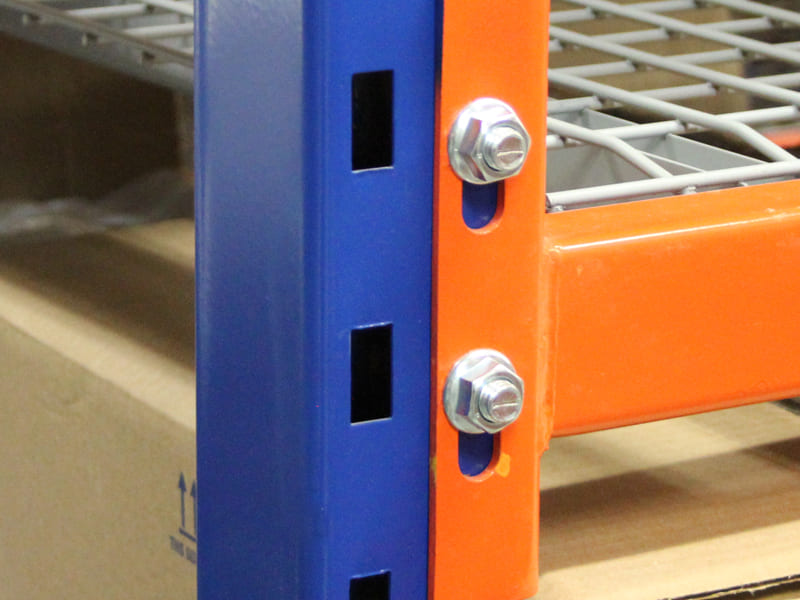Call Us :8615298359310
Call Us :8615298359310
In the warehousing and logistics industry, choosing the right racking system is essential for ensuring both operational efficiency and safety. Two primary types of racking systems dominate the market: bolted racking and welded racking. Each has its own set of advantages and disadvantages, especially when considering factors such as structural integrity, durability, customization, cost, and ease of repair. This article provides a comprehensive comparison of both systems, helping you make an informed decision for your warehouse storage needs.
Structural integrity plays a pivotal role in determining which racking system will best suit your facility. Bolted racking systems are designed similarly to many large-scale building constructions, relying on steel posts and beams that are bolted together to form a sturdy framework. This method allows for flexibility in the face of external forces, such as forklift impacts or seismic events. Bolted connections, unlike rigid welded joints, have a degree of movement that helps absorb these forces without transferring them across the entire structure, preventing damage to the system.
In contrast, welded racking systems feature rigid, fixed joints that offer less flexibility under pressure. While this rigidity might seem beneficial in terms of creating a stable framework, it makes welded racks more vulnerable to stress from external forces. Welded racks are often used in regions where seismic activity is minimal, but in areas with frequent earthquakes or heavy impacts, welded systems are more likely to break or fail under pressure.
Key takeaway: If your warehouse is located in an area with high seismic activity or heavy forklift traffic, a bolted racking system provides better flexibility and long-term resilience.

A common misconception about bolted racking systems is that bolts can loosen over time, requiring regular maintenance to prevent structural issues. However, modern bolted systems are designed with serrated lock nuts and limited bolt threads, preventing overtightening and ensuring that the bolts stay securely in place. Once tightened during installation, these lock nuts do not loosen easily, even during shipment.
On the other hand, welded racking systems are entirely dependent on the quality of the welds. A poor weld can undermine the entire structure’s integrity, leading to potential safety hazards. If a welded frame is damaged, it is more prone to complete collapse compared to a bolted system. In the event of damage to a bolted system, the rack can continue to provide some support and individual damaged components can be easily replaced without compromising the whole structure.
Key takeaway: Bolted racks offer greater durability, particularly in terms of maintenance and long-term use, as they can withstand minor damage without the risk of collapse.
Customization is an important consideration for warehouses with unique storage requirements. Bolted racking systems excel in this area because their modular design allows for easy adjustments. The frame columns can be cut to size, and the bracing can be reconfigured to suit specific layout needs during assembly.
Conversely, welded racking systems are much more difficult to customize. To alter a welded system, the manufacturer must remove the bracing, cut down the columns, and then re-weld the components. This process is not only time-consuming and costly, but in some cases, it may not be possible to achieve the desired customization without compromising the structure’s integrity.
Key takeaway: If your warehouse requires frequent reconfigurations or adjustments to the racking system, bolted racks provide a much more flexible and cost-effective solution.
When considering the cost of a racking system, both production and shipping play significant roles. Bolted racking systems are generally less expensive to produce because they do not require the same level of labor and materials as welded systems. This cost difference is particularly noticeable when a galvanized finish is required, such as in pharmaceutical or food handling applications. Bolted racks can be galvanized before assembly, while welded racks must be galvanized after construction, increasing their production cost.
Shipping costs also favor bolted systems. Bolted racks can be shipped in pieces, allowing for more efficient use of space in trucks. A typical truckload of bolted racks can hold almost twice the weight of a truckload of welded racks. This not only reduces shipping costs but also minimizes the number of trips needed to deliver the racking system to your warehouse.
The installation cost is another factor to consider. While bolted racks may require more time to install than pre-assembled welded racks, the lower labor costs associated with bolted systems often make them a more economical option. Welded systems, on the other hand, require specialized labor for production, driving up the overall cost.
Key takeaway: For businesses looking to minimize both upfront and long-term costs, bolted racking systems are more cost-effective in terms of production, shipping, and installation.

In any warehouse, accidental damage to the racking system is a common occurrence, whether from forklift impacts or heavy loads. One of the primary advantages of bolted racking systems is their ease of repair. If a component is damaged, it can be easily unbolted and replaced without affecting the rest of the structure. Additionally, bolted systems allow for quick visual inspections, as any damage is immediately apparent.
Welded racking systems, on the other hand, present more challenges when it comes to repairs. Damage to a welded rack may not be visible at first glance, and diagnosing the issue often requires further testing. Repairs usually involve cutting away the damaged portion and welding new components into place, which can be both time-consuming and expensive.
Key takeaway: In environments where damage to racking systems is likely, bolted racks offer a significant advantage due to their ease of repair and lower maintenance costs.
Warehouses located in areas prone to seismic activity must prioritize the flexibility and resilience of their storage systems. Bolted racking systems are inherently more adaptable in these conditions due to their non-rigid joints. The ability of bolted connections to absorb and dissipate forces from earthquakes or other vibrations makes them a safer choice in seismic zones.
While welded racking systems can be reinforced for seismic activity, such as with slope-back legs or full-depth base plates, they still lack the inherent flexibility of bolted systems. Once welded joints experience strain from seismic forces, they are more likely to break, putting the entire structure at risk.
Key takeaway: For warehouses in seismic zones, bolted racking systems provide a more reliable and adaptable option for handling seismic activity.
When deciding between bolted and welded racking systems, it’s important to consider the unique needs of your warehouse. Bolted systems offer significant advantages in terms of flexibility, durability, customization, and cost-effectiveness. They are particularly well-suited for environments where seismic activity, forklift impacts, or frequent reconfigurations are expected. On the other hand, welded systems may be preferable in smaller facilities with less exposure to external forces and where the structural rigidity of welded joints is prioritized.
Ultimately, the decision comes down to your specific warehouse requirements, budget, and long-term operational goals. If you want a custom storage solution, don't hesitate to contact us now, our team of experts is ready to find the best fit for your warehouse.
Copyright © 2024 Jiangsu VISON Logistics Technology Co., Ltd. All Rights Reserved.  Network Supported
Network Supported
Sitemap | Blog | Xml | Privacy Policy